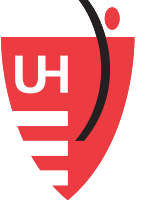UH Cleveland Medical Center Enrolls First Patient at the Site for an AAV Gene Therapy Trial Treating OTC Deficiency
October 07, 2020
CLEVELAND – A patient at University Hospitals Cleveland Medical Center received treatment with an AAV8-mediated gene transfer of human Ornithine Transcarbamylase (OTC). The infusion was well tolerated, and the patient was discharged without issue. The gene therapy is part of an international, multi-site clinical trial sponsored by Ultragenyx Pharmaceutical Inc. The company anticipates completing enrollment of this Phase 1/2 study in 2020 and enrolling a Phase 3 in 2021.
“We are excited to offer this groundbreaking treatment to our patients with this rare, inherited disorder,” says Laura L. Konczal, MD, Center for Human Genetics at UH Cleveland Medical Center, and the site’s principal investigator. “At this time, gene therapy is available only for a select number of conditions, and mainly as part of clinical research trials.”
There are 12 sites worldwide participating in the study titled ‘Phase 1/2, Open-Label Safety and Dose-Finding Study of Adeno-Associated Virus (AAV) Serotype 8 (AAV8)-Mediated Gene Transfer of OTC in Adults with Late-Onset OTC Deficiency’. Seven of the study sites are located in the United States.
A rare disease, OTC deficiency is the most common urea cycle disorder. It leads to a defect in the breakdown of nitrogenous wastes produced by the normal metabolism of protein, creating an accumulation of harmful metabolites (such as ammonia) that can cause headache, vomiting, confusion and, at higher levels, permanent brain damage, lethargy, coma and even death.
OTC deficiency is inherited in an X-linked manner, leading to males being more severely affected than females, and often requires liver transplant in infancy. Some patients present later in life with less severe disease, requiring daily treatment for ongoing symptoms and acute emergency management in times of metabolic crises.
Treatment typically involves daily medications known as nitrogen scavengers (to prevent ammonia accumulation), limitation of dietary protein intake, and supplementation with L-citrulline. During times of illness, or when showing symptoms of hyperammonemia, patients often require hospitalization for IV nitrogen scavenger therapy, IV L-arginine, non-protein caloric support such as dextrose and intralipid administration and, in severe cases, dialysis.
“The ultimate goal of AAV8-mediated gene transfer therapy is to allow for enough production of a working OTC enzyme from the transferred gene to alleviate the need for daily nitrogen scavenger treatments, L-citrulline supplementation and to enable an increase or even normalization of dietary protein intake,” says Dr. Konczal. The production of OTC enzyme from the introduced OTC gene may also prevent metabolic crises in times of physiologic stress, thus reducing or eliminating the frequency of hospitalization for disease complications related to hyperammonemia.
Dr. Konczal adds that this therapy could ultimately lead these patients to a normal lifestyle after years of medications, dietary protein restriction and recurrent hospitalizations.
Tags: Clinical trials, Gene therapy, Research


